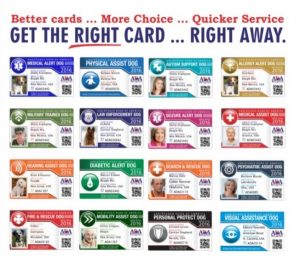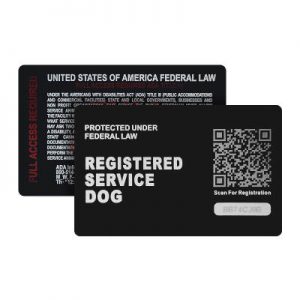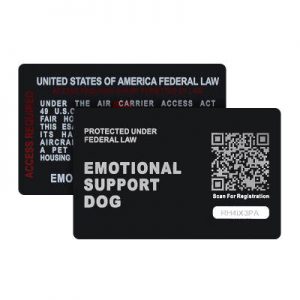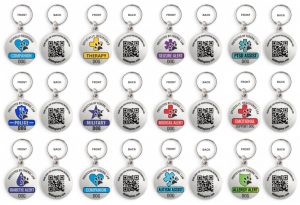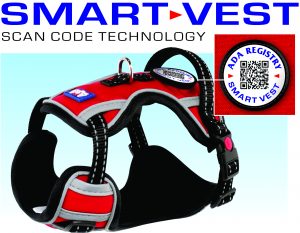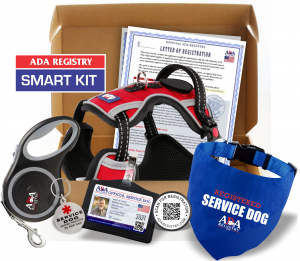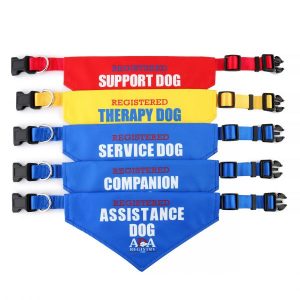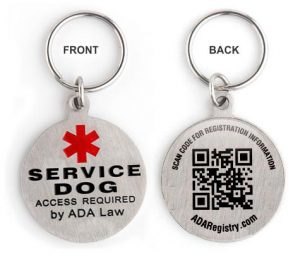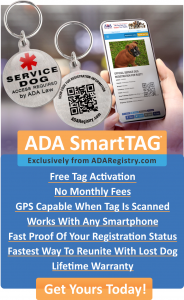Avoiding Disputes In Public
Many access problems can be avoided by a team with a professional presentation.
1. Dog and handler should be well groomed and clean.
2. Dog and handler should be well behaved.
3. Dog should be marked as a service dog (though not legally required, it is beneficial to both the person with a disability and to the business they are visiting.
Businesses have a right to expect your dog to be inoffensive in both grooming and behavior. That means a dog who does not smell bad, have mats, obvious areas of soiling, or blowing coat. His cape and other gear should also be kept clean and in good repair.
The most easily recognized form of marking for a service dog is a cape. The cape should be of a solid color, easily seen, and should be professionally embroidered with the words “service dog” on each side. Colored leashes may or may not be recognized. Patches on collars/leashes or bandannas may not be visible enough. Dogs should present a professional appearance, which means no cute hats or outfits, especially on small dogs. With the number of Paris Hilton wannabes out there carrying dogs as fashion accessories, the last thing a handler with a small dog needs is to be confused with them.
Please note: service dogs are not required to be caped, or to have specially designed capes as described in this article. However, this is the type of cape most likely to help avoid access problems, the focus of this article.
The dog should behave impeccably and be leashed at all times except while performing specific needed tasks that would be prevented by the leash. That means he sits or stands quietly in heel position without sniffing, whining, wandering at the end of his leash, soliciting attention from other patrons (except perhaps a smile and mild tail wag). He absolutely, positively should not make unsolicited contact with another patron, such as nosing them or, heaven forbid jumping up on them. Jumping up on another patron is sufficient grounds for the business to believe your dog is not trained properly and ask you to leave.
The handler should be obviously in control without appearing abusive. If you have to nag at your dog you need more training before working in public.
The handler should present himself or herself in a professional, workmanlike manner. The handler should appear confident. That means keeping the head raised and the eyes looking straight ahead, not at one’s feet. Avoid unwanted interaction by walking briskly and by fixing your gaze on a distant point at the back of the store as if you know precisely where you are going and are in a hurry to get there.
The handler should have a well-rehearsed, non-confrontational, educational response to typical questions or statements from staff such as “you can’t have a dog in here.” Responses should be confident but NOT confrontational or defensive. Explain calmly that the dog is a service dog trained to assist you because of your disability. Don’t start out threatening to sue or shrieking about rights. In other words, don’t look for a confrontation by being confrontational yourself. Even if the business person appears upset, above all else, you MUST remain calm in order to have the greatest chance at success.
A handler who acts nervous or defensive appears to the business person to be guilty or hiding something, and their natural assumption is that the dog is really a pet, not a service dog. A professional presentation of both handler and dog is the single most powerful tool in access.

